Direct previews with Active Storage
Nowadays Ruby on Rails includes Active Storage for handling file uploads, including support for direct uploads from the browser. Recently, we’ve worked on an application that uses the Dropzone file upload component (with the help of Stimulus to wire it up).
Until recently, direct previews of movies and PDFs turned out to be a little more involved. To understand why, we’ll first look at how Active Storage enables direct file uploads:
- The user loads a web page, containing a form with a file element.
- Dropzone embellishes the form with a more friendly component.
- The user selects a file to upload.
- Dropzone shows a preview of the file (when the file is an image and
createImageThumbnailsistrue). DirectUploadrequests an upload URL from theDirectUploadsControllerDirectUploaduploads the selected file.- The returned
signed_idis stored as a hidden input in the form. - The user submits the form.
- The controller stores the record and associates the already uploaded file.
Often, you would want to show an image thumbnail after the form is submitted.
That is easy enough
e.g. with url_for(file.representation(resize_to_fill: [102, 120])). But here
we would like to show the thumbnail in Dropzone, before the server renders
something new. A thumbnail that is generated server-side, which works for non-image
file formats, like movies and PDFs, too.
One way would to be define a custom controller action that returns the thumbnail URL, and this would be called after the upload is finished. But it feels a bit strange to do so, since all of Active Storage is built into Rails, but not this. Do we need to define an extra route just for this?
A simpler way would be to return a thumbnail URL from the DirectUploadsController.
Yes, even when the file has not been uploaded yet, a URL can already be generated. So
we created an override for the DirectUploadsController.
In the routes, add:
# config/routes.rb
Rails.application.routes.draw do
post "/rails/active_storage/direct_uploads", to: "direct_uploads#create"
# ...
end
then create the custom controller
# app/controllers/direct_uploads_controller.rb
class DirectUploadsController < ActiveStorage::DirectUploadsController
private
# add thumb_url to response
def direct_upload_json(blob)
json = super(blob)
json[:thumb_url] = url_for(blob.representation({ resize_to_fill: [120, 120] }))
json
end
end
Then in the code that integrates Dropzone, the returned thumb_url can be used
to set the thumbnail:
// ...
class DirectUploadController {
// ...
start() {
// ...
this.directUpload.create((error, attributes) => {
if (error) {
// handle error
} else {
this.hiddenInput.value = attributes.signed_id;
this.file.status = Dropzone.SUCCESS;
this.source.dropZone.emit("success", this.file);
// this is the new line that adds the server-generated thumbnail
this.source.dropZone.emit("thumbnail", this.file, attributes.thumb_url);
this.source.dropZone.emit("complete", this.file);
}
});
}
// ...
}
And so we have server-generated thumbnails, including for movies and PDFs (which the browser can’t do).
Later addition: using named variants
Since Rails 7.0, Active Storage allows using named variants. This has the benefit of a single place where to configure the specific settings for an image variant, and allows generating these variants in a worker (offloading the web process).
This works great, except it breaks when we try to use the named variant in
the DirectUploadsController above. It seems like named variants work only
work after the file has been uploaded and/or variant has been generated. To
still have the convenience of named variants, we can just get the processing
parameters directly:
# app/controllers/direct_uploads_controller.rb
class DirectUploadsController < ActiveStorage::DirectUploadsController
private
# add thumb_url to response
def direct_upload_json(blob)
json = super(blob)
variant_tf = MyModel.attachment_reflections["files"].named_variants[:thumb].transformations
json[:thumb_url] = url_for(blob.representation(variant_tf))
json
end
end
This code block contains a direct reference to the model (MyModel) and the
attribute (files), so it is not a generic solution. This can probably be
improved, e.g. by getting the attachment from the blob and, which contains the
model name and attribute. But for us, it works well as it is.


